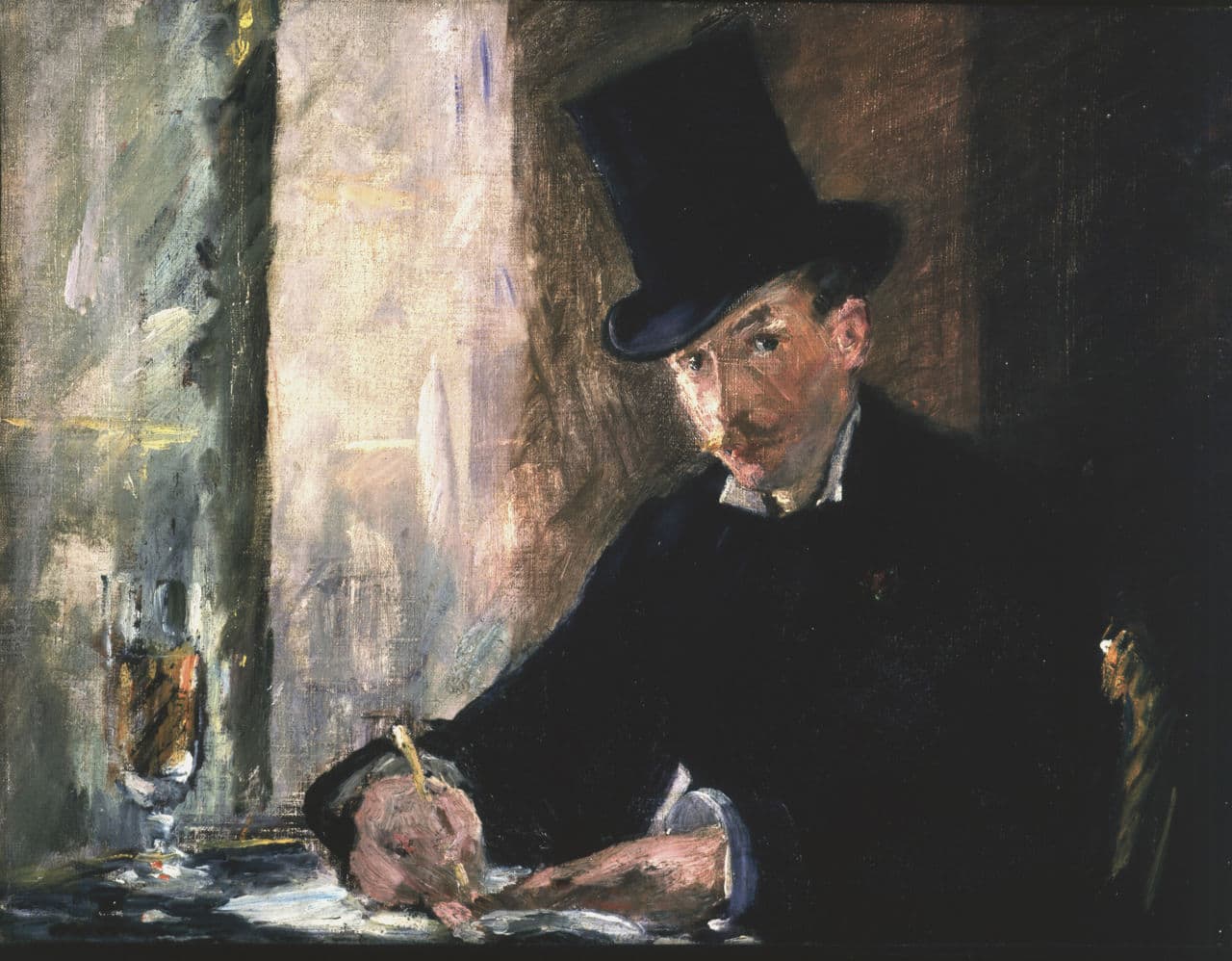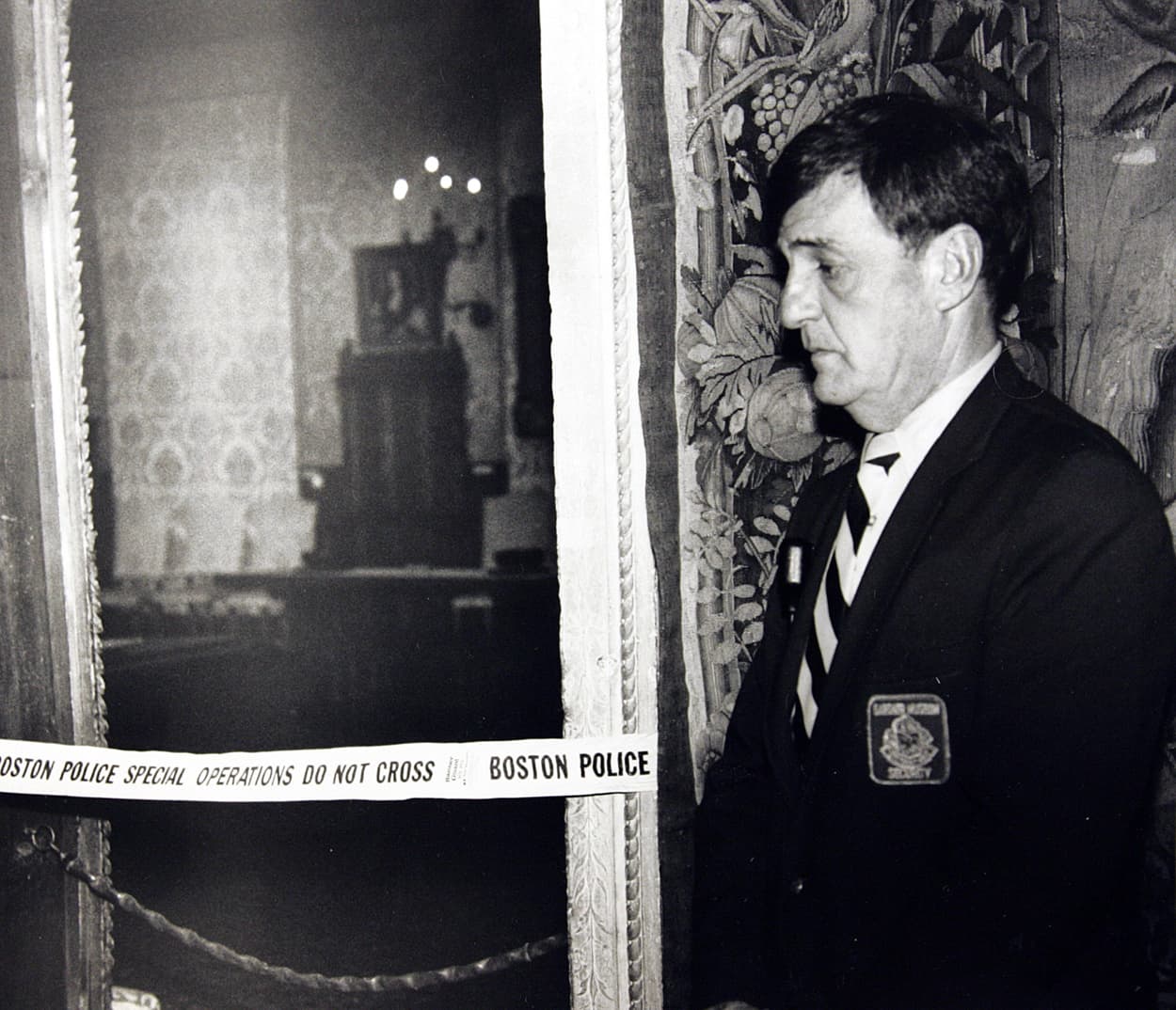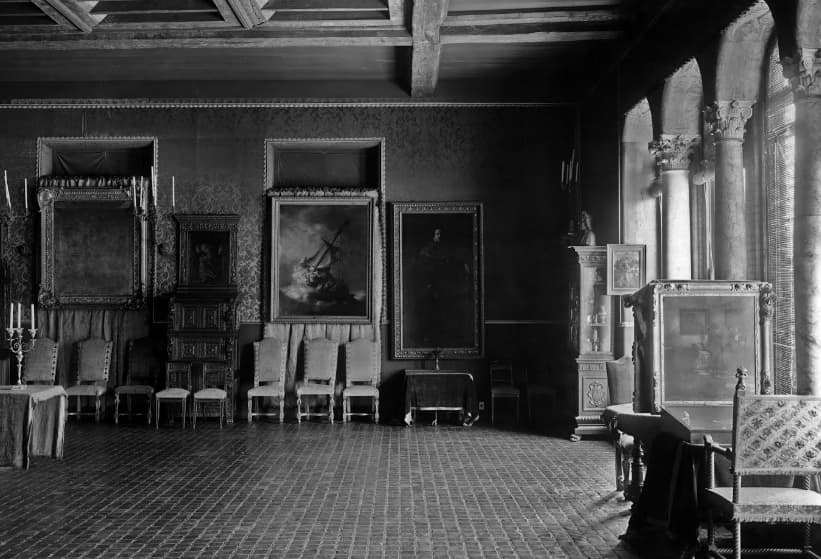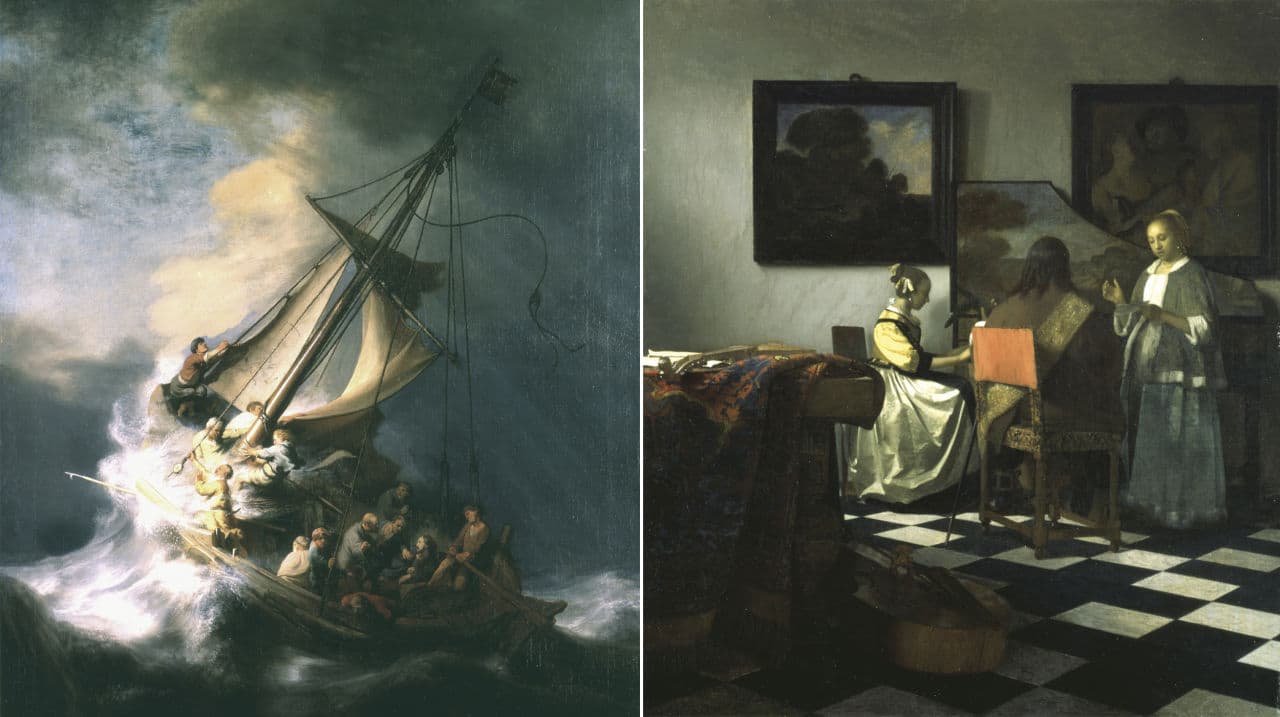Advertisement
25 Years After Heist, Gardner Museum Asks Us To Focus On The Art, Not The Empty Frames
ResumeWith more than 2,500 objects, the Isabella Stewart Gardner Museum houses one of the most impressive personal art collections in the world — but it’s best known for artworks that aren’t there anymore.
Twenty-five years ago, on March 18, 1990, two thieves lifted 13 pieces from the historic palazzo's ornate galleries, and the trove’s whereabouts remain an unsolved mystery.
To commemorate the loss, the Gardner Museum has created a virtual tour to help keep the missing artworks — estimated to be worth $500 million — in the public eye.

The now-famous empty frames that once held the Gardner's stolen works are still potent symbols of the notorious heist, especially for head of security Anthony Amore. He hopes this virtual tour at the museum's website will change how the public connects with the missing art.
“If you just think about an empty frame, you’re not visualizing the loss. You’re looking at a crime scene, for the lack of a better term,” he said. “The media always wants to go to the empty frames, always wants to focus on the crime, and I love this because it focuses on the art.”
The museum's webmaster Andrew Keys designed the virtual tour, which allows viewers to closely examine several rooms at the museum before the theft and after.

Titled “Thirteen Works: Explore the Gardner’s Stolen Art," it opens with a $5 million reward offer and a plea for information about the theft. But then the text asks us what we really know about the stolen works themselves. Imagery from today is contrasted with shots from 1926. It feels almost like you're following in the footsteps of thieves.
“We start you out on the first floor and there was one work taken from the first floor — it’s a painting by Manet called 'Chez Tortoni,'" Keys said. “And it was actually a really small painting. I don’t think any of us even realized until we looked at the archival image versus the room today and we thought, ‘Wow, there was a painting there, really?' You could very easily miss it.”

“If that was the only piece that was stolen that night, if it was the theft of one painting, this would still be one of the most valuable stolen paintings in the world,” Amore said, gazing at the high resolution image. “Sometimes it’s forgotten by the public, and through this project you can’t help but see, my God that’s a beautiful painting, this is where it belongs and it should be back there.”
Amore has been obsessing over these images since he came to the museum 10 years ago. He’s never seen the actual artworks though, and stares at the screen as Keys zooms in on the image.
“The resolution is so high you can look at brush strokes, you can see in 'Chez Tortoni' that in some spots Manet used the canvas as the white in the painting,” Amore explained.

The tour also features documents that illustrate the history behind each stolen work. Keys envisioned this project almost as a series of art biographies. He says everyone is fascinated by how the masterpieces left the museum, but not about how Isabella Stewart Gardner got them here in the first place.
“She was great about keeping things like this telegram where her friend Louis Kronberg, who had picked up this painting for her, cabled her and wrote, ‘I got the painting,’ and gave her some details. We have the actual copy of that in our archives,” Keys said.
And now it's online for the public to see, too.
Outgoing Gardner director Anne Hawley had just started her job at the museum at the time of the theft. She says beholding the stolen art online brings their ghosts to life.

“We have to keep this story alive, and we have to keep the images out there,” Hawley told me. “There are whole new generations that have come along since this happened who don’t know about it.”
People like 19-year-old Dominga Decoster. I found the UMass Boston student pondering in front of the empty frames in the Gardner's Dutch room, where she told me she just learned about the heist in art class.
“From what I know is that they cut the images out of the canvas, and then rolled it up and stuffed it into an architecture tube.* So that probably ruined the paintings,” she said. “I mean it’s kind of like defacing art, so it kind of gives you a sour outlook on it.”
The Dutch room is the last stop on the virtual tour. It’s where the best-known works were stolen, including Rembrandt’s “Christ in the Storm on the Sea of Galilee” and Vermeer’s “The Concert.” Two other museum visitors, Ed and Helen Ballantine of Suffern, New York, say they appreciate the opportunity to learn more about the stolen paintings.

“I would be curious to know what they look like. Whether I’ll go on the computer to find out, I don’t know,” Helen Ballantine said, laughing. “I’m not very computer savvy.”
Her husband Ed concurred. “I’m even less so. Doesn’t seem as if they’ll ever be recovered and it’s a tremendous loss, obviously."

Regardless, Amore, the Gardener's security director, holds out hope for their recovery.
“It cannot hurt for interested parties to see these images in case they remember seeing them somewhere else,” he said, pointing to recent developments over the past few years identifying the thieves.
Anthony Amore will lead a public lecture about the Gardner heist’s 25th anniversary at the museum on March 26.
*Update: The Gardner Museum told WBUR that it firmly believes that the Rembrandts "could not and were not rolled." The museum's statement continues: "The masterpieces had thick backing glued to the canvas and layers of varnish. Our evidence indicates they were not bendable and no residue was left behind. The idea that they are rolled and in tubes is one of the myths that [head of security] Anthony Amore wants to dispel."
